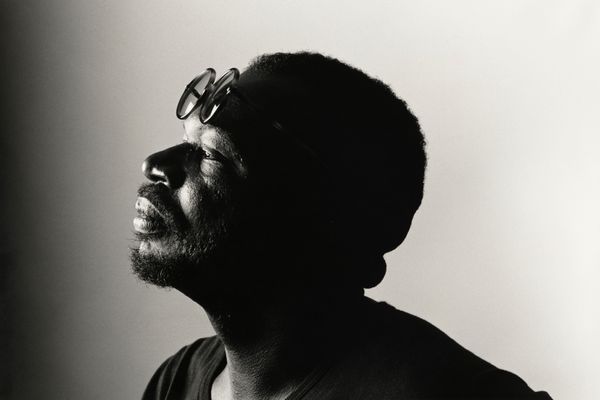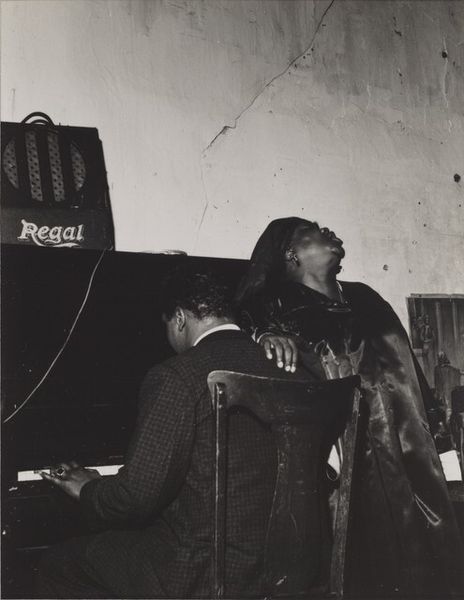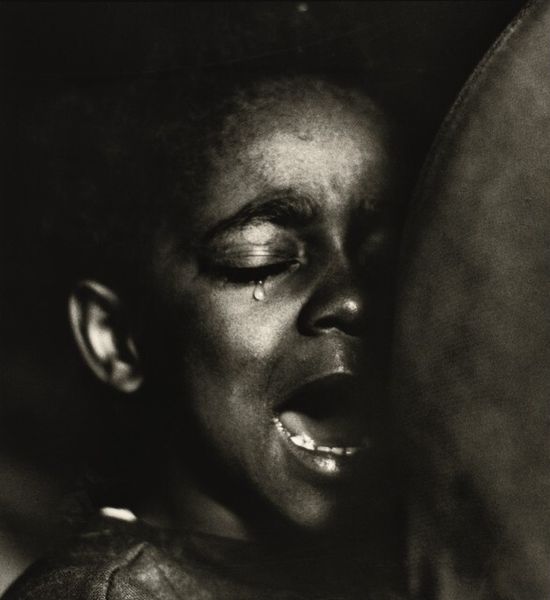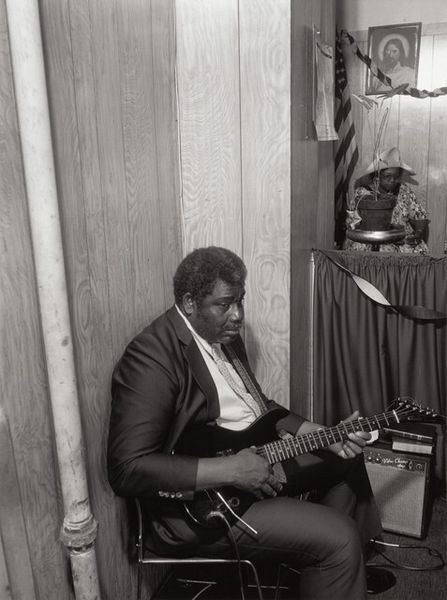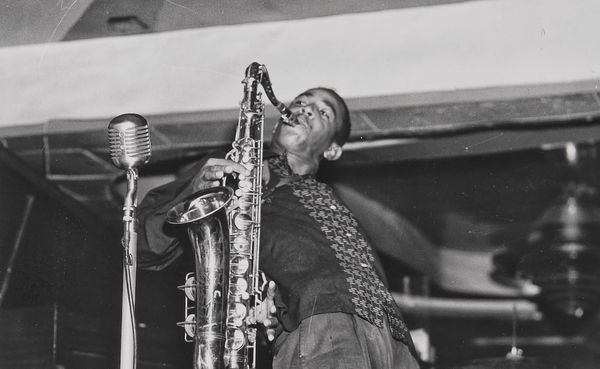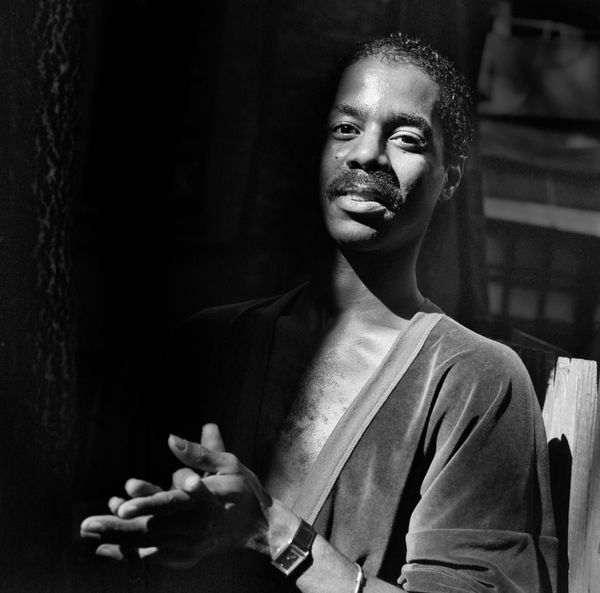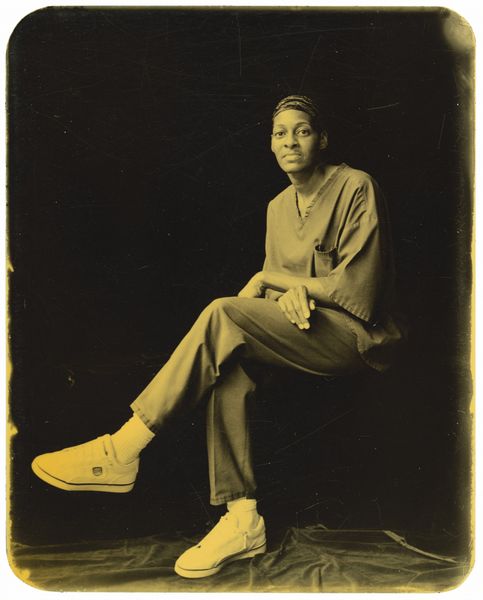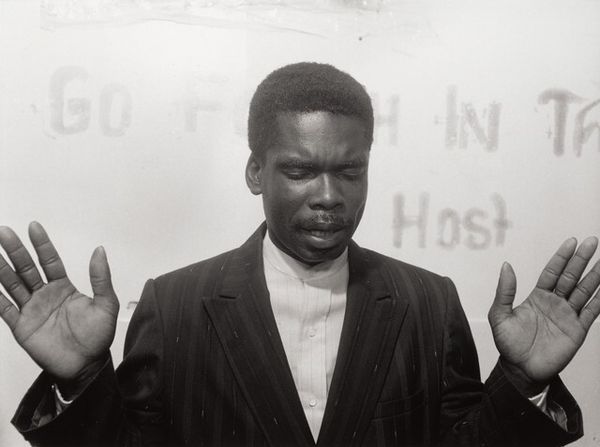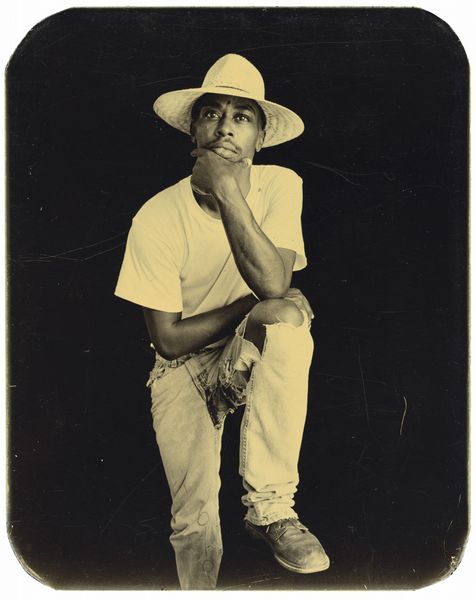
Dimensions: image: 18 x 15.2 cm (7 1/16 x 6 in.) mount: 35.2 x 35.9 cm (13 7/8 x 14 1/8 in.)
Copyright: National Gallery of Art: CC0 1.0
Curator: Let’s delve into Milton Rogovin's captivating black and white photograph from his "Storefront Churches" series, created between 1958 and 1961. It’s a gelatin-silver print capturing a powerful moment. Editor: Immediately, I notice the intensity of the speaker’s expression – the slightly tilted head, the animated hands, the mouth open in what looks like fervent oration. It draws me right into that space. Curator: Rogovin dedicated years documenting marginalized communities. This image really speaks to the ways religion became a space for Black Americans to practice self-determination, and foster community solidarity. Editor: Yes, the image exudes energy, but also points to a certain lived reality. You can almost feel the smallness and constraints of the space within the photograph's boundaries. His slightly rumpled jacket suggests this is a working man finding solace, or strength. The starkness of the materials conveys much, not only about the immediate church, but about wider social structures. Curator: Absolutely. Think about the Great Migration, when millions of African Americans fled the Jim Crow South. These storefront churches served not only as religious hubs but as vital community spaces that enabled collective identity and mutual aid. It's important to also consider the photograph’s connections to the Black Arts Movement. Editor: That link to the Black Arts Movement highlights a clear cultural production, absolutely. It acknowledges a period where artistry and the articulation of Black experience become interwoven. Considering Rogovin’s position as a white photographer documenting Black religious life also adds further complexity, making us question both access and intention. Curator: Exactly. His work, while celebrated for its empathy, must also be critically examined. The act of capturing and representing communities requires accountability and reflexivity, demanding an understanding of power dynamics. Editor: Indeed. Reflecting on Rogovin's "Storefront Churches" series invites us to ponder how artistic intention intersects with the materiality of daily life, social conditions and our own interpretations. It's fascinating to note how such simple means can reveal profound depths.
Comments
No comments
Be the first to comment and join the conversation on the ultimate creative platform.
